FTC Disclosure: If you make a purchase via a link on this site, We may receive a small commission on the transaction - at no added cost to you. Thank you!
Hummingbird Sleep
Hummingbird Torpor
Hummingbirds do sleep! Hummingbird Sleep is actually Hummingbird Torpor, a hibernation like state that allows hummingbirds to conserve energy by slowing down their metabolism, heartbeat, and respiration rate at night; usually hanging upside-down on a branch. This is how hummingbirds survive cold nights.
In Torpor, the decrease in bodily functions and the drop in body temperature are great. Hummingbirds go into Torpor at night when they can no longer feed, to rest from the high energy needed during the day, and when the outside temperature drops.
Torpor differs from hibernation. Unlike hibernation which can go on for months at a time, Torpor is daily or noctivation (at night).
This usually happens on cold nights, but sometimes they go into a torpid state during the day. Usually, they will sleep upside down on a familiar branch of a tree or bush that is somewhat protected from the elements.
While in
torpor hummingbirds lower their metabolic rate a great deal and often as much
as 95%. It uses about 50% less energy
than when it is awake.
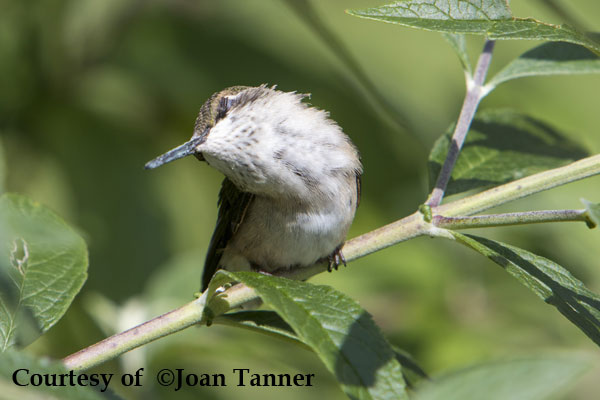 Hummingbird in Torpor
Hummingbird in TorporHummingbirds are warm-blooded creatures. You might be surprised to learn that hummingbirds need to maintain a constant body temperature even higher than humans. As a matter of fact, they need to keep a constant body temperature of between 104 and 108 degrees. This compares to a human body of what we all know as 98.6.
If a mother hummingbird has a nest with eggs or chicks, she will stay on the nest to sleep. Hummingbirds have been seen sleeping in Torpor on a feeder.
Body Temperature Is Vital To Hummingbird Sleep
During the day, when hummingbirds are flying or hovering, their body temperature will be highest. At night however, their body temperatures dip to the level that it is just high enough to maintain normal body function but low enough to conserve the precious energy needed to survive. This level will vary based on the outside temperatures at night. There is a risk for these sweet little birds because this leaves them with only enough energy to last through the night. Yet, normally they survive but sometimes not.
Body heat means everything to hummingbirds. For one thing, these gorgeous and tiny birds have fewer feathers than other birds. This is because they need to have an efficient body that is as light weight as possible in order for the flight aerobics they perform such as flying forward, backwards, upside down and hovering in place. As a result, the insulation that they get from their feathers is insufficient.
With eyes closed, they do sleep with their feathers fluffed to maximize the small insulating potential these feathers provide. However, the hummingbirds need to rely on metabolic heat to maintain their body heat. In order to have a metabolic heat at night, they rely on Torpor. It is during Torpor that the body temperature of a hummingbird drops well below the daytime temperature of 104 to 108 degrees. Often this body temperature in Torpor is just barely enough to live.
Conserving Energy In Torpor Is Needed For Survival.
Hummingbirds cannot see well at night. They cannot fly or hover to get the nectar and insects that they eat almost continuously throughout the day.
Since metabolic heat is derived from the metabolism of glucose, the hummingbirds cannot keep their necessary body temperatures during the night. Torpor is nature’s solution to the problem.
Today, many more hummingbirds seem to be overwintering in areas where they had rarely been seen at that time of year. Some people notice that hummingbirds stay behind and do not migrate before the cold weather sets in.
Sometimes a cold snap occurs at an unusual time of year while the hummingbirds are still around. Hummingbird lovers often worry if they will survive the cold. During any of these times hummingbirds rely on Torpor.
What is important is that we continue to feed the hummingbirds until they actually leave. Sometimes it is necessary to bring the feeder in at night but please hang it back outside before dawn. Hummingbirds absolutely need to eat after Torpor. If you do not get up early find a way such as a heater or Christmas lights to keep the feeder warm enough so that the nectar does not freeze.
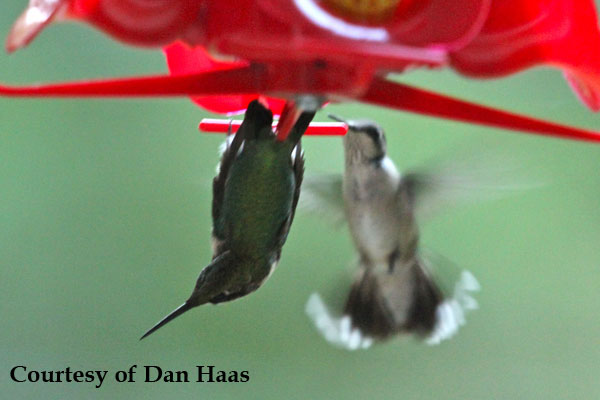
It Takes Time To Awake From Hummingbird Sleep
It is important to take note that when in Torpor hummingbirds can seem to be dead. There aren’t any signs of life such as breathing. Observation is important.
It can take anywhere from 20 minutes to an hour for hummingbirds to recover from sleep (Torpor).
They generate body heat by shivering. Shivering enables them to regain body heat by a few degrees each minute. Scientists have seen that they awaken an hour or two before dawn. So they do have an internal time clock. If you see a hummingbird that does not recover in this time frame, sadly it may be ill or dead.
There are still unanswered questions about Torpor. For example, even though Torpor is considered to be hummingbird sleep, the body temperature is well below the normal temperature needed for simple sleep (non-Torpor state).
So........ do hummingbirds actually sleep in a normal way (non-Torpor state), that is, a non-Torpor state at any time during early morning hours? We do know that they go into a feeding frenzy in the morning just after dawn and in the evening before sunset. It is often assumed that this feeding frenzy happens immediately after the hummingbird come out of Torpor but this has not been verified.
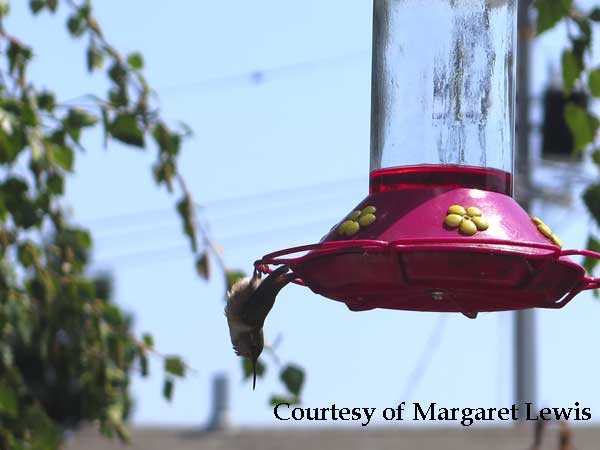


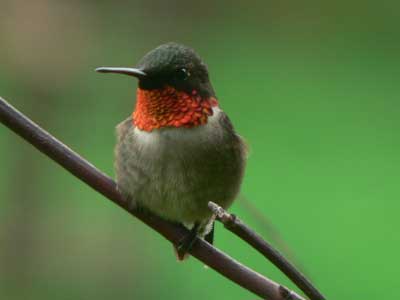






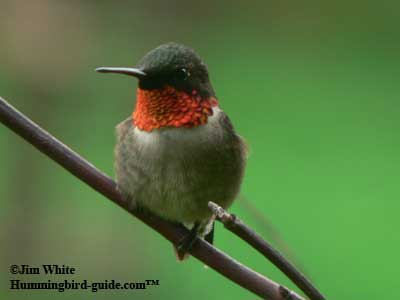
New! Comments
Have your say about what you just read! Leave me a comment in the box below.